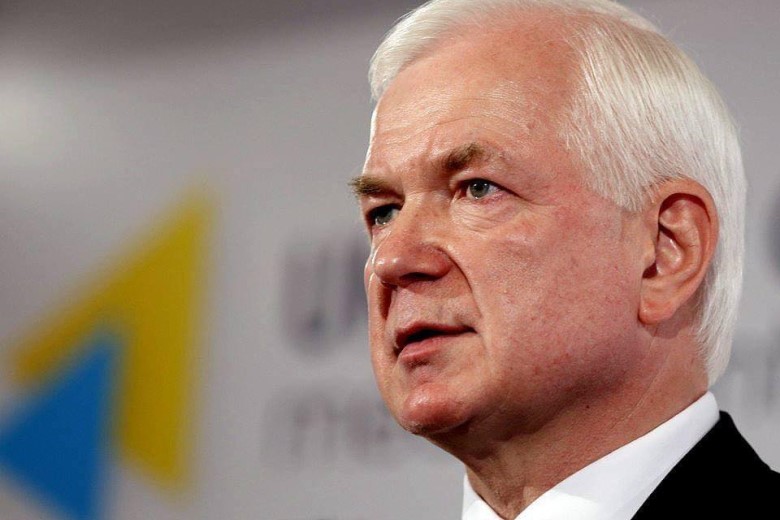Russia Planned Summer Offensive on Eight Fronts, Bogged Down on Three, General Malomuzh Says

To capture Pokrovsk in the Donetsk region, Russian occupiers are using tactics of pushing through in small groups. But the Ukrainian Defence Forces are counterattacking and advancing systematically, said Army General Mykola Malomuzh, head of the Ukrainian Foreign Intelligence Service from 2005 to 2010.
The Gaze writes about it, referring to a broadcast on the FREEDOM TV channel.
He noted that Russia planned to launch a summer offensive in eight main sectors — from Sumy to Zaporizhzhia and Kherson.
"The first stage of the offensive failed. That was in June, early July. So now the Russians are focusing on three strategic directions — Sumy, Lyman and Pokrovsk. Moreover, the enemy has identified the Pokrovsk direction as strategically important for itself, and as a supplement to Pokrovsk — the Novopavlivka direction," Malomuzh said.
The Pokrovsk section of the front is crucial for the Russians, and Putin has set the Russian army the task of taking Pokrovsk in the coming weeks.
"Therefore, approximately 120,000 soldiers of various branches and types of enemy troops are concentrated in this sector. They've brought in equipment, aircraft, and drones," the general said.
The occupiers are trying to use the same tactics on Pokrovsk that they used earlier when they took Avdiivka — attacking from the flanks and rear.
‘And now, for four days, fighting has been going on in the south-west of Pokrovsk,’ the spokesperson clarified.
Russian troops are also using tactics of advancing in small groups and using sabotage and reconnaissance groups (SRG). But Ukrainian defenders have developed countermeasures.
‘The enemy's change in tactics is due to its approach to the city. Their DRG are sabotage groups of special forces, they are professionals, not “mobiks” who are used as ’cannon fodder" during assaults. Enemy DRGs enter different sectors, distracting our attention with firepower and drone strikes. Then they attack a specific sector or street. For example, Heroiv Street in Pokrovsk: they entered there and tried to gain a foothold. They entrenched themselves in certain locations in small groups or individually. We spent three days searching for them and driving them out. As a result, we neutralised the enemy in this sector," Malomuzh said.
Similarly, the Russians are trying to bypass Pokrovsk from the north to create a semi-encirclement and cut off the city from two highways used to supply weapons and equipment to Ukrainian defenders. These are the Pokrovsk-Kostiantynivka and Pokrovsk-Pavlohrad highways.
"They are constantly covering these two logistics routes with drones, artillery and missile systems. This complicates the situation because we are delivering supplies to the front line and evacuating the wounded under enemy fire. Moreover, the enemy has now significantly increased its drone attacks," the general explained.
Ukrainian defenders are countering this: on the one hand, they are striking from the flanks and counterattacking in the sectors themselves.
‘And we are advancing 300-400 metres. We are carrying out strategic counterattacks: where the enemy does not expect it, where it has already dug in — and we come in from the right or from the rear,’ said the spokesperson.
On the other hand, the Ukrainian Defence Forces are attacking the enemy's rear.
"We are striking Russian groups in their rear — with drones, long-range artillery, missiles, and aviation. In this way, we are destroying the reserves that are being brought in for such operational attacks and creating protection against Russian artillery and missile systems that are covering our logistics. We are also actively destroying their drones. We are striking Russian units that are just arriving at the front. This is a very important component: not to search for them at the front, not to knock them out of cities, but to strike them 10-15 kilometres away, when they are just approaching the front lines," Malomuzh emphasised.
He is confident that the situation in the Pokrovsk direction will change in the near future and that Ukrainian defenders will manage to hold the city.
“The Pokrovsk direction is constantly under the control of the Russian leadership in terms of capturing this sector in order to advance further to Kostiantynivka, Kramatorsk and Sloviansk. This is their number one task. But they are not achieving this goal, and they will not achieve it," the general emphasised.
The enemy is also trying in vain to resume attacks in the Sumy direction.
"There are heavy battles, but we are holding our positions. It is important that we are holding the Kursk direction; the enemy has long wanted to drive our troops out of this territory. But we are holding advantageous positions and destroying large numbers of the enemy. And the Russians are unable to implement their plan to create a ‘buffer zone’ in the Sumy and Kharkiv regions,” Malomuzh noted.
The Ukrainian defence forces are also holding the Lyman direction. The enemy is unsuccessfully trying to advance from above, from the Kharkiv region. The goal, in particular, is to divert Ukrainian army forces from the Pokrovsk direction.
‘It can be stated that strategically, the summer offensive operation has failed,’ Malomuzh concluded.